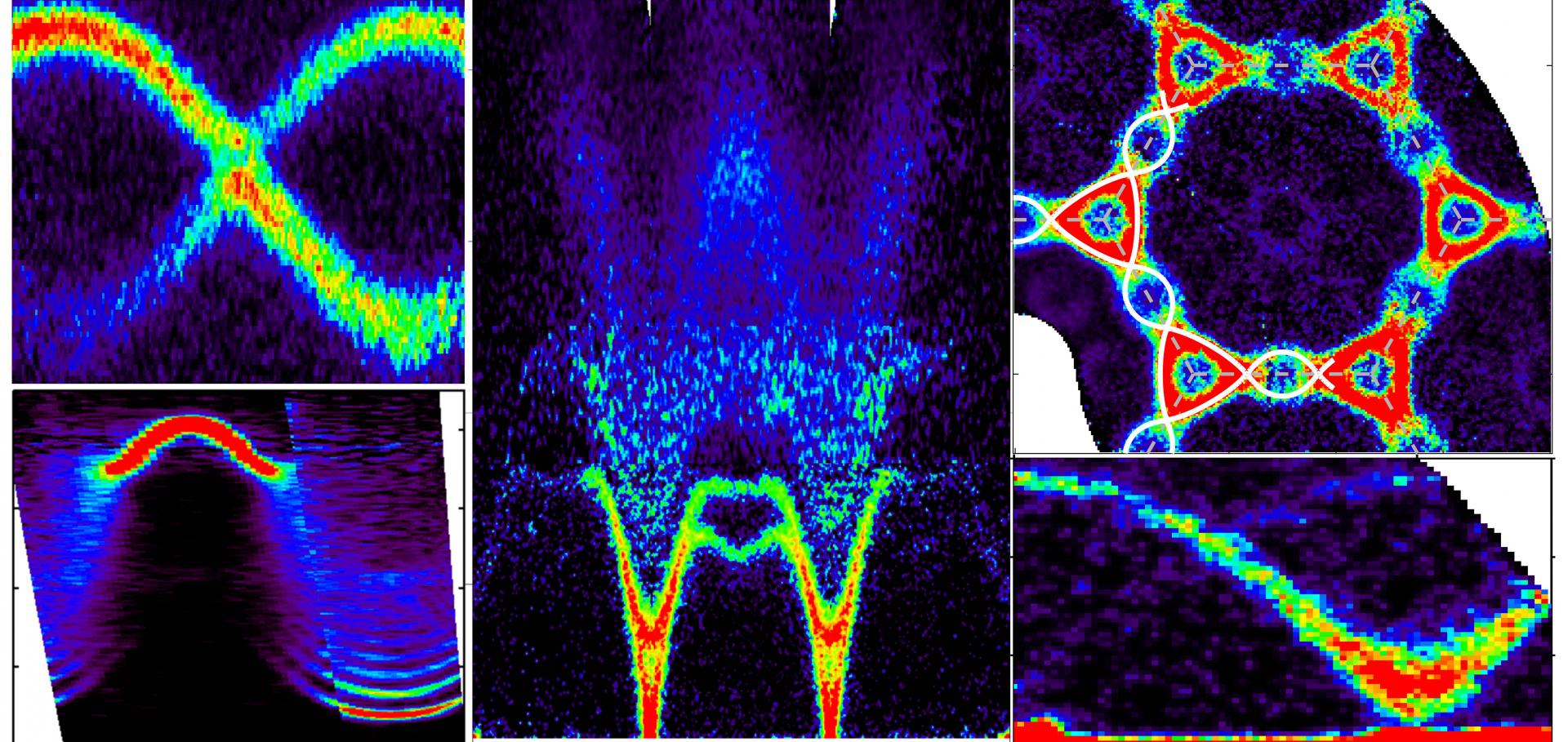Direct measurement of the spin Hamiltonian and observation of condensation of magnons in the 2D frustrated quantum magnet Cs2CuCl4.
Phys Rev Lett 88:13 (2002) 137203
Abstract:
We propose a method for measuring spin Hamiltonians and apply it to the spin- 1/2 Heisenberg antiferromagnet Cs2CuCl4, which shows a 2D fractionalized resonating valence bond state at low fields. By applying strong fields we fully align the spin moment of Cs2CuCl4, transforming it into an effective ferromagnet. In this phase the excitations are conventional magnons and their dispersion relation measured using neutron scattering give the exchange couplings directly, which are found to form an anisotropic triangular lattice with small Dzyaloshinskii-Moriya terms. Using the field to control the excitations we observe Bose condensation of magnons into an ordered ground state.Order to disorder transition in the XY-like quantum magnet Cs2CoCl4 induced by noncommuting applied fields
(2002)
Order to disorder transition in the XY-like quantum magnet Cs2CoCl4 induced by noncommuting applied fields
ArXiv cond-mat/0203070 (2002)
Abstract:
We explore the effects of noncommuting applied fields on the ground-state ordering of the quasi-one-dimensional spin-1/2 XY-like antiferromagnet Cs2CoCl4 using single-crystal neutron diffraction. In zero field interchain couplings cause long-range order below T_N=217(5) mK with chains ordered antiferromagnetically along their length and moments confined to the (b,c) plane. Magnetic fields applied at an angle to the XY planes are found to initially stabilize the order by promoting a spin-flop phase with an increased perpendicular antiferromagnetic moment. In higher fields the antiferromagnetic order becomes unstable and a transition occurs to a phase with no long-range order in the (b,c) plane, proposed to be a spin liquid phase that arises when the quantum fluctuations induced by the noncommuting field become strong enough to overcome ordering tendencies. Magnetization measurements confirm that saturation occurs at much higher fields and that the proposed spin-liquid state exists in the region 2.10 < H_SL < 2.52 T || a. The observed phase diagram is discussed in terms of known results on XY-like chains in coexisting longitudinal and transverse fields.Field dependence of magnetic ordering in the frustrated XY magnet Cs2 CoCl4
Applied Physics A: Materials Science and Processing 74:SUPPL.I (2002)
Abstract:
Low-dimensional magnets with low-spin quatum number are ideal model systems for investigating strongly interacting macroscopic quantum ground states and their non-linear spin excitations. We present single-crystal neutron-diffraction measurements of the ordered phase of the quasi-one-dimensional spin-1/2 XY antiferromagnet Cs2CoCl4 both in zero field and in fields up to 6.5 T. In zero field the system shows long-range order below TN = 217 mK with a commensurate ordering wave-vector (0, 0.5, 0.5). With increasing magnetic field - applied perpendicular to the magnetic chain axis - the magnetic Bragg peak intensities increase monotonically, reaching a maximum at H = 1.4 T; evidence that the magnetic field suppresses quantum fluctuations in the ground state. At Hc = 2.1 T the ordered structure collapses in an apparent first-order phase transition, with no magnetic Bragg peaks being observed in the (0, k, l) scattering plane above this field. This result suggests that the magnetic field induces a phase transition to a spin-liquid ground state. Magnetic Bragg peak intensities at ferromagnetic positions increase quadratically up to about 2.8 T, corresponding to a linear increase of the magnetic moment. At higher magnetic fields, the intensity increases linearly up to 6.5 T.Evolution of spin excitations in a gapped antiferromagnet from the quantum to the high-temperature limit
(2001)


